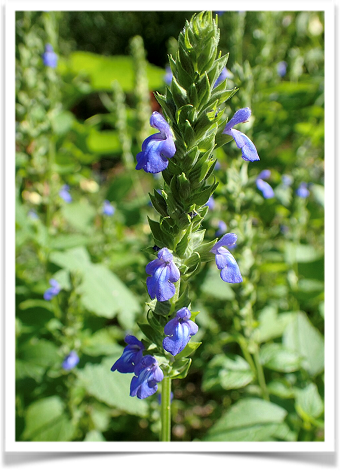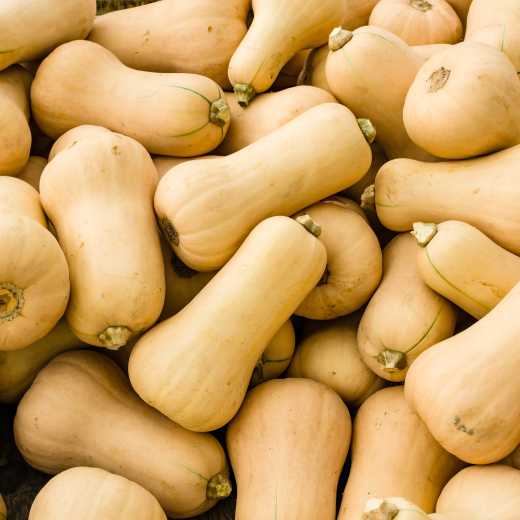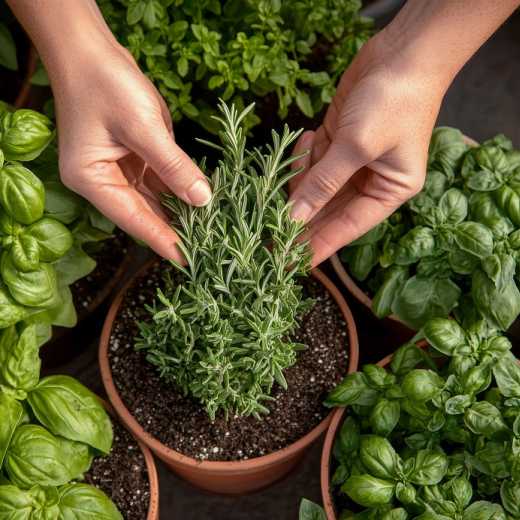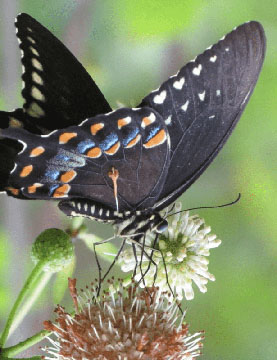Pass Along Plants - Tarahumara Chia
Ask any garden club friend where they got a plant and chances are they will tell you another friend introduced them. This usually sets off a chain of other names who passed the plants on to the first person, and so it goes. In this series, we will interview gardeners who share stories of special plants acquired from garden club friends.
About ten years ago, an Oregon friend mailed me some seeds from his organic farm. It was both a pass along plant and an experiment to see how well they would grow in our coastal humidity and low elevation. The seeds were Tarahumara Chia, Salvia tiliifolia, a lesser known species of the chia plant.

The plant commonly known as chia, derives from three species native to the higher elevations of Mexico and Central America where rainfall is more prevalent. These are
Salvia hispanica, Salvia polystachia (fka polystachya), and Salvia tiliifolia (fka tilliaefolia).
Of these three, Salvia hispanica is the most common and commercially grown chia plant. It’s common name is Chia sage. This species grows 3-6’ tall and is native from Northern Mexico to Guatemala and Panama.
Leaves are more oblong than round with smooth edges. Medium blue flowers with white centers form on 5-6” spikes. Leaves are oblong, light green, forming opposite the square stem. Seeds are varied and can be brown, black or grayish white.

Salvia polystachia (fka polystachya) is a secondary source of commercially grown chia. Commonly called Many Flowered Sage, its native range extends from North Central Mexico down to Panama. This species grows 3-9’ tall at higher elevations and features lighter blue flowers that fade to white in the middle. Leaves are smooth and heart-shaped and grow in clusters. Seeds come in a variety of colors including black, brown, and grayish-white.

Salvia tiliiifolia (fka tilliaefolia), the Tarahumara Chia, is native to the more arid regions of Central Mexico. This plant is rarely found commercially and its cultivation is credited to the Tarahumara people.
The Tarahumara, or Rarámura people, as they call themselves, are indigenous to the North-central state of Chihuahua, Mexico, and are known for their uncanny ability to run very long distances with ease. For millennia, they have collected this plant and harnessed the power of its seeds, calling it the seed of the gods.

North America also has a native chia, albeit with a very unique look. Salvia columbariae is native to the desert regions of California, Nevada, Arizona, New Mexico, and Utah. A quintessential desert plant, the whitish gray-green leaves are thick and lobed. Unlike its cousins, the light to dark varieties of blue flowers form around the central stalk instead of a spike. Edible seeds can be harvested and used just like other chia seeds.
GROWING CHIA
All species can be easily grown as annuals in temperate zones and newer varieties are being developed for cooler regions. Like most plants grown for their seeds, the higher the average temperature, the lower the oil content and the higher the protein.
While these plants are all touted for their ability to thrive on neglect, for best seed production, plants prefer 100-150 days of full sun, warm temperatures and plenty of water. Sandier soils, with a neutral to slightly acidic pH produce the healthiest plants.
The flowers of all of these salvias are rather insignificant but do provide a light blue spike which, en masse, creates a nice filler or backdrop for other plants. I mixed mine into a pollinator bed where green sweat bees and orchard bees seem to love it.
To maximize seed production, I also tried them in an irrigated raised bed all to themselves. That was ten years ago. They still come back every year whether I want them to or not. From one 12” x 2” box, I can harvest 1/2 cup seeds.
While some say the word chia means strong, it is more accurately derived from the Nahuatl (Uto-Aztecan) word chian, meaning ‘oily’. Oil from pressed seeds has been used internally and externally for millennia. Today, it can be found in most health food stores as Chia oil or Salvia hispanica oil, and it is recommended as a moisturizer and UV protector. Some tout it as an insect screen but I could find no studies to prove its effect.
While the oil is beneficial, consuming the entire seed provides the greatest health benefits. Two tablespoons of chia seeds (1 ounce or 28 grams) contain:
- 140 calories
- 4 grams of complete protein containing all nine essential amino acids*
- 11 grams of fiber
- 7 grams of unsaturated fat
- 18% RDA for calcium
- Trace minerals including zinc and copper.
Chia are also the richest plant source of omega-3 alpha-linolenic fatty acid (ALA) which our bodies use to reduce inflammation, cleanse arteries and boost brain function. [2]
*It should be noted that black seeds contain more Omega-3 and white seeds contain more protein.
To harvest seeds, cut the seed stalks on a clear, dry afternoon. Bundle and hang upside down over a screen or cloth. Store in a cool, dry spot away from light or moisture. I use mason jars with an Oxygen absorber.
Chia seeds can be stored for 4-5 years without refrigeration.
Whichever variety you choose to grow or use, recipes for chia abound. In the cooler months they can be roasted and added to baked good or sprinkled on a salad or rice dish.
My favorite is the original Chia Fresca drink. This makes a quick pick-me-up, or a refreshing summer meal substitute.

REF:
1. https://powo.science.kew.org/taxon/927520-1
2. https://nutritionsource.hsph.harvard.edu/food-features/chia-seeds/
3. https://www.nativeseeds.org/pages/tarahumara-chia
https://www.nativeseeds.org/pages/tarahumara-chia
4. https://simplecapacity. com/2016/08/chinampas-floating-gardens-aztecs/
com/2016/08/chinampas-floating-gardens-aztecs/

 Member Login
Member Login






